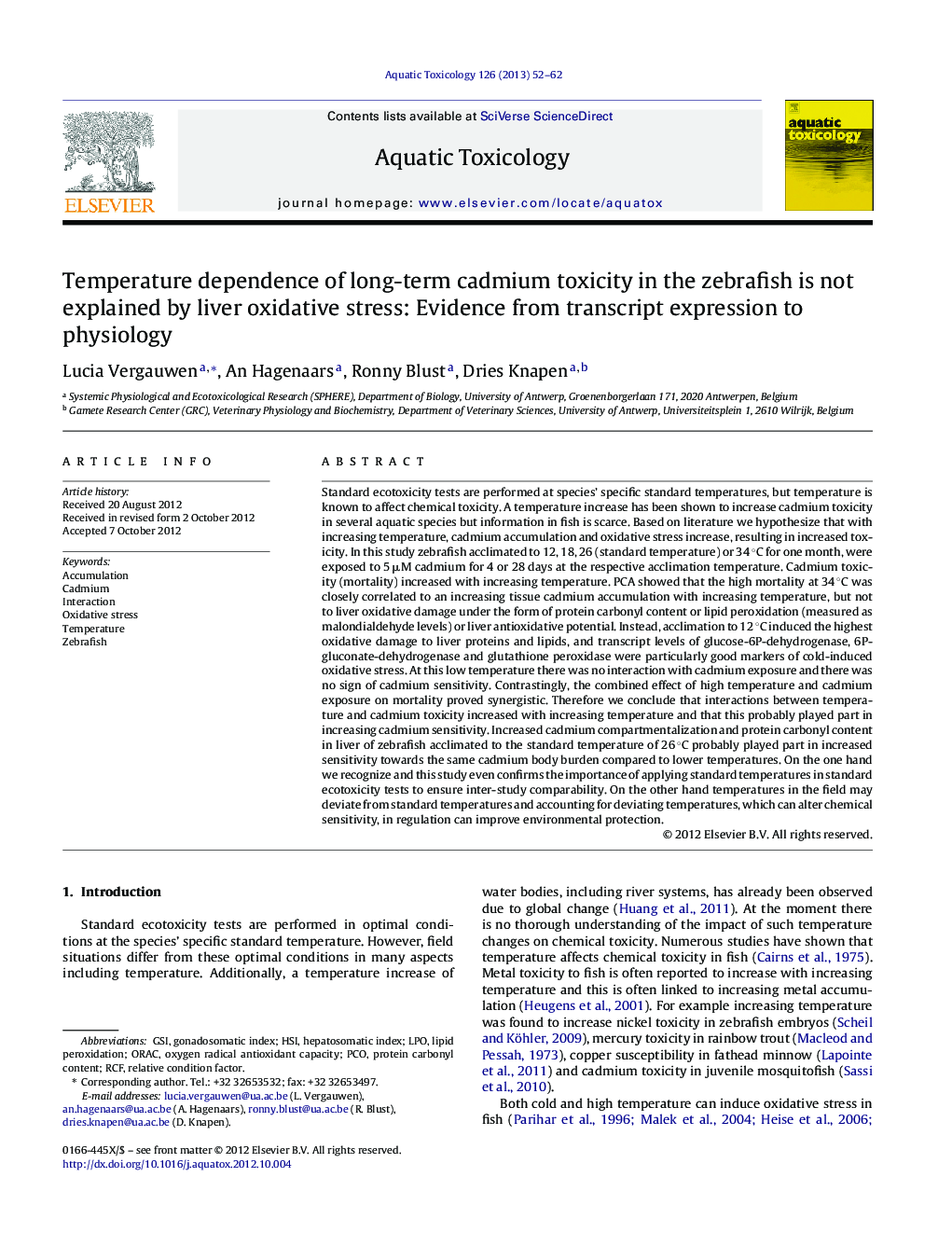| Article ID | Journal | Published Year | Pages | File Type |
|---|---|---|---|---|
| 4529587 | Aquatic Toxicology | 2013 | 11 Pages |
Standard ecotoxicity tests are performed at species’ specific standard temperatures, but temperature is known to affect chemical toxicity. A temperature increase has been shown to increase cadmium toxicity in several aquatic species but information in fish is scarce. Based on literature we hypothesize that with increasing temperature, cadmium accumulation and oxidative stress increase, resulting in increased toxicity. In this study zebrafish acclimated to 12, 18, 26 (standard temperature) or 34 °C for one month, were exposed to 5 μM cadmium for 4 or 28 days at the respective acclimation temperature. Cadmium toxicity (mortality) increased with increasing temperature. PCA showed that the high mortality at 34 °C was closely correlated to an increasing tissue cadmium accumulation with increasing temperature, but not to liver oxidative damage under the form of protein carbonyl content or lipid peroxidation (measured as malondialdehyde levels) or liver antioxidative potential. Instead, acclimation to 12 °C induced the highest oxidative damage to liver proteins and lipids, and transcript levels of glucose-6P-dehydrogenase, 6P-gluconate-dehydrogenase and glutathione peroxidase were particularly good markers of cold-induced oxidative stress. At this low temperature there was no interaction with cadmium exposure and there was no sign of cadmium sensitivity. Contrastingly, the combined effect of high temperature and cadmium exposure on mortality proved synergistic. Therefore we conclude that interactions between temperature and cadmium toxicity increased with increasing temperature and that this probably played part in increasing cadmium sensitivity. Increased cadmium compartmentalization and protein carbonyl content in liver of zebrafish acclimated to the standard temperature of 26 °C probably played part in increased sensitivity towards the same cadmium body burden compared to lower temperatures. On the one hand we recognize and this study even confirms the importance of applying standard temperatures in standard ecotoxicity tests to ensure inter-study comparability. On the other hand temperatures in the field may deviate from standard temperatures and accounting for deviating temperatures, which can alter chemical sensitivity, in regulation can improve environmental protection.
► Toxicity of 5 μM cadmium in zebrafish was investigated at 12, 18, 26 or 34 °C. ► Cadmium accumulation and toxicity increased with increasing temperature. ► Pronounced oxidative stress at 12 °C did not increase with increasing temperature. ► Increased cadmium toxicity not accompanied by increased oxidative stress. ► Overlapping working mechanism of chemical and temperature complicates interactions.
